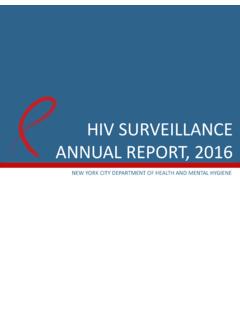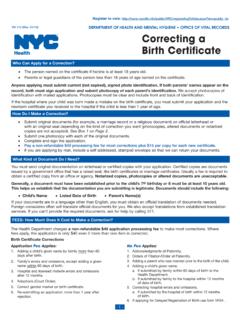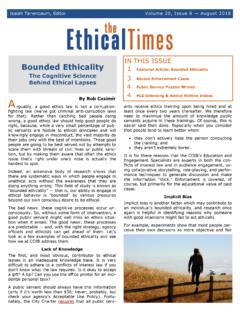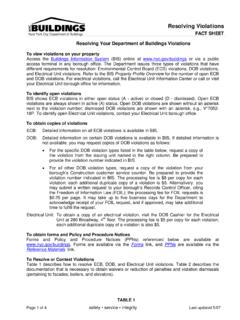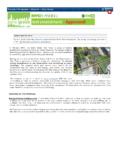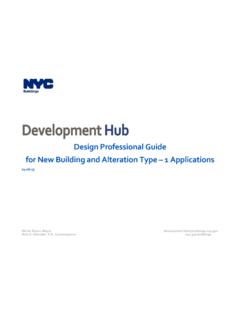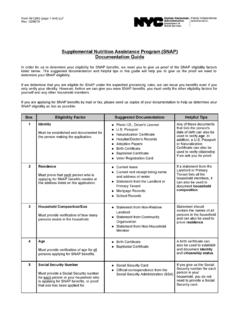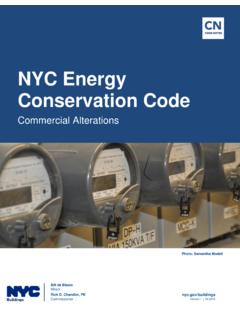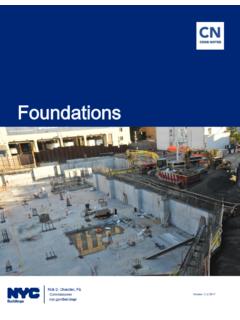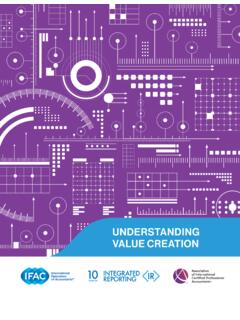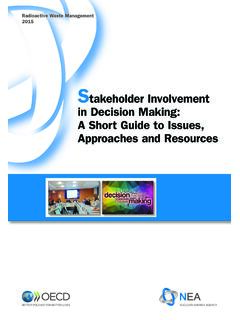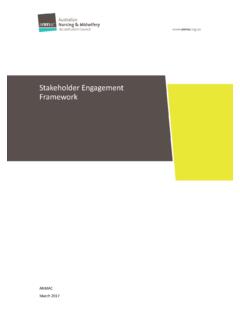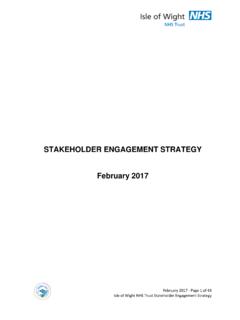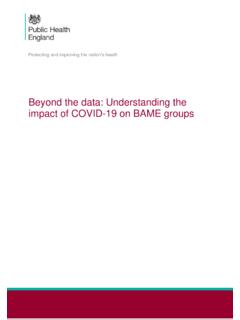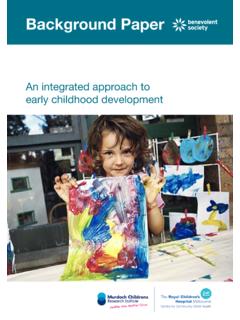Transcription of Community Engagement Framework - City of New York
1 NEW YORK CITY DEPARTMENT OF health AND MENTAL HYGIENEC ommunity Engagement FrameworkMAY 20171 Table of ContentsIntroduction ..4 Definitions ..6 Framework Diagram ..8 Overarching Considerations ..9 Background ..9 Core Values and Principles ..11 Key Considerations ..12 How to Use the Framework ..14 Categories of Community Engagement within the Framework ..15 Outreach ..15 Collaboration ..19 Shared Leadership .. Brief Description of the DOHMH Community Engagement Workgroup Process ..23 Acknowledgements ..25 IntroductionIn 2014, under the leadership of Commissioner of health Dr. Mary T. Bassett, the New York City Department of health and Mental Hygiene made advancing health equity a clearly articulated agency goal. Since then, the health Department has launched a multi-faceted internal reform effort called Race to Justice, which aims to build our organizational capacity to advance health equity.
2 Racial equity and social justice are necessary to achieving the health Department's mission to promote the health of all New Yorkers, and this work outlines how we can strengthen our policies and practices to improve outcomes across the city. Expanding and aligning the agency s Community Engagement activities is essential to advance health equity and is a core action area of Race to Justice. 5 Although Community Engagement is an essential element of public health work, much variation exists across the health Department in what Community Engagement means and entails. In the spring of 2015, staff from each division formed the Community Engagement Workgroup in an effort to unify the agency s understanding and approach to Community Engagement . From March through December 2015, the Workgroup, including its Steering Committee and various subcommittees, worked on the following: Identification of current agency assets and practices in Community Engagement A specific Community Engagement Framework for the agency Recommendations for a process to develop agency-wide indicators Recommendations for a process to train staff in the use of the Framework and indicators Recommendations to continue this work and align it with ongoing efforts to examine our practices with a racial equity and social justice lens and to determine opportunities for improvement A brief description of the workgroup s process can be found in the Appendix.
3 The Community Engagement Framework that follows is an adaptation of a publication from the Department of health and Human It is simple and flexible and will allow staff across the agency to establish a common language for discussion and refiningagency work related to Community Engagement . The Framework can be used as both a planning and an assessment tool. It also has broad application to Community Engagement work across all divisions and complements other models for collaborative work currently in use across the agency, including Collective document is the written articulation of months of discussion, comparisons with other paradigms for Community Engagement , and examination of the agency's current practices. If the process that has begun continues, this document will change and grow as staff start using and building on the various approaches outlined here. 1. Principles of Community Engagement , Second Edition, NIH publication No.
4 11-7782, Kaina, J., Kramer, M. Collective impact. Stanford Social Innovation Review. Winter 2011. Retrieved Jan 27, 2017 from: Definitions6 The words we use to describe our work should be clear and familiar to all agency staff. Because these terms are also commonly used in everyday language, it is important to articulate their specific meanings for our purposes. The following are the working definitions of terms used in this Framework : Community Engagement : ..the process of working collaboratively with and through groups of people affiliated by geographic proximity, special interest or similar situations to address issues affecting the well-being of those people. (CDC, 1997) Community : A group of people with diverse characteristics that share commonalities, including geography or social, political, or economic experiences. Stakeholders: Individuals, communities or organizations that are invested in and effect or are affected by the system, intervention or program.
5 Specifically, stakeholders include: The individuals or groups most affected by the issues being addressed Individuals or organizations responsible for addressing the issue; those whose jobs or lives might be affected by the process or results of the intervention or program Institutions and their representatives who have the power to make decisions about the intervention or to influence others; those who have a vested interest in the outcome of the effort ( , government officials, policy makers)Partners: Individuals, communities, and/or organizations that enter into a mutual agreement with the health Department (and perhaps other organizations and agencies as well). These may include but are not limited to: local, state, national, international, public, faith- and Community -based, private and academic organizations. Partners may or may not be directly affected by the activities they are engaged : Partnerships generally involve shared objectives, distinct accountabilities, and reciprocal obligations.
6 Partnerships are expected to add value to what each individual partner could achieve alone. Such arrangements build on the strengths and capabilities of each entity to produce larger and more sustainable impacts. Strategic partnerships help define local priorities for social investment, assign responsibilities, apportion costs, mitigate risks, establish accountabilities, improve productivity and resolve conflicts. Ideally, partnerships avoid duplication of efforts, capitalize on each actor s expertise and pool resources to tackle complex social problems. 7 health Equity: When all people to have the opportunity to attain the highest level of health . No one is kept from reaching the highest level of health because of their social position ( , class, immigration status) or social identities ( , race, gender, sexual orientation). (Adapted from CDC.)Social Justice: The view that everyone deserves equitable economic, political and social rights and Justice: The fair treatment of people of all races across policies, institutions and communities resulting in equal opportunities and outcomes for all.
7 (Adapted from Race Forward.)8 Framework Diagram Have you thought about Community Engagement for your project?OutreachIf NO, why not?YESR eview Overarching Considerations and select which of the following elements best fits the project at this timeEvaluateCollaborationSharedLeadershi pConsultationOverarching Considerations9 Background Community Engagement is defined as the direct participation of neighborhood residents or other members of cultural, religious, social or political communities in addressing issues directly affecting that population. As New York City s health Department, we work with many different groups of people, including other city government agencies, Community organizations, faith-based organizations, schools, academic institutions, and residents living in the city and many others. The Framework acknowledges that communities are overlapping and concentric and values the importance of building authentic, sustainable and trusting relationships with Community members.
8 It considers residents and those most affected by our decisions as the primary stakeholders in the health Department s work. This motivates us to think critically about our relationships with various communities and innovate ways to encourage stakeholder participation in agency planning and Framework will support and guide our agency's practice to advance health equity. health equity is the attainment of the highest level of health for all people, where no one is kept from achieving this level of health due to social position or identities. Implicit in this definition is the fact that optimal health for all is not yet a reality, as some are unfairly disadvantaged by social conditions and systems, while others are unfairly advantaged. To advance health equity, we must identify the underlying social and systemic injustices that drive health inequities and intentionally design strategies that change these systems by promoting social, racial and economic a local public health department, we can advance justice through critical research, policy, advocacy, program development and evaluation, and other public health practices.
9 This work includes examining the power dynamics and structures within and among the institutions including our own that maintain inequities. Understanding and addressing these dynamics is critical to meaningful Community Engagement ; they determine who we choose to engage and how, who is included in decision-making, and how Community members power is valued and accounted for in our in our language is important. The health Department understands that people use similar terms in different ways. This document includes a glossary of the terms used throughout the document (see page 6).PolicyLink3 notes that, Community Engagement is not just a set of activities and methods confined to a particular project, policy or process. Rather, it is a way of communication, decision-making and governance that recognizes Community members power and includes them and other stakeholders in identifying problems and making decisions that promote equitable outcomes.
10 PolicyLink continues, Public agencies have plenty of tools for basic public participation and protocols for using them, but many of these are ineffective because they do not address the legacy challenges in low-income communities and communities of color, nor do they tap into their expertise and organizing capacity. Community Engagement encompasses a more comprehensive approach, creating practices and institutionalized mechanisms that prioritize the interests of marginalized communities and facilitate interactions between agency staff and diverse we work to advance health equity across the city, we must embrace Community Engagement as an agency-wide strategy, expanding our approach beyond the discreet needs or activities of programs. This strategy aims to build and maintain relationships with partners and residents, as well as create planning and decision-making structures that support their voice in multi-stakeholder collaborative efforts.
